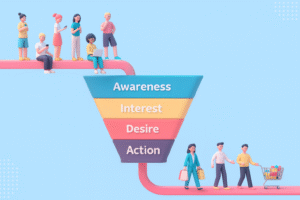In an era where every data point can drive a competitive advantage, businesses are increasingly turning to unconventional data sources to inform strategy.
One of the most underutilized yet powerful data streams comes from video surveillance systems.
Once deployed solely for safety and compliance, these systems are now being transformed into strategic tools through AI-powered video analytics.
AI video analytics doesn’t just record events, it interprets them, extracts patterns, and provides actionable insights.
Enterprises across retail, logistics, manufacturing, and corporate sectors are beginning to realize the true potential of video as a driver of growth, not just security.
The Evolution of Video Surveillance: From Passive to Proactive
Traditionally, video surveillance has served a reactive purpose. Cameras captured footage, and human operators would review it only after an incident occurred.
This reactive model posed two major limitations: delay in response and lack of proactive insights.
Enter AI-powered video analytics. By integrating artificial intelligence and machine learning algorithms, businesses can now monitor, analyze, and respond to activities in real time.
Facial recognition, behavioral pattern analysis, object detection, and people counting are just a few capabilities that modern systems offer automatically and at scale.
There are countless companies like Coram offering AI-powered video analytics solutions. These cutting-edge systems use artificial intelligence and machine learning to enable a wide range of capabilities.
Operational Efficiency Through Real-Time Insights
AI video analytics has become a silent operator for improving business operations. In manufacturing, for instance, cameras can now detect anomalies on the production floor, helping identify inefficiencies or potential safety hazards.
In logistics hubs, AI tracks movement patterns of goods and personnel, ensuring smoother workflows and load balancing.
Retailers use these systems to track in-store foot traffic, dwell time, and heat maps, allowing them to optimize store layouts and staffing schedules based on real consumer behavior.
Enhancing Customer Experience
Customer behavior analysis is becoming a key growth strategy, and AI video analytics is playing a pivotal role.
Businesses can track how customers interact with products, how long they stay in a certain zone, and what paths they take through the store.
These insights drive personalized marketing, optimize product placement, and refine customer journeys.
For example, quick-service restaurants use facial emotion detection and queue monitoring to improve service speed and satisfaction levels.
Banks use similar systems to tailor the layout and staffing of customer service areas.
Data-Driven Decision Making at Scale
The integration of video analytics into business intelligence platforms gives leaders access to visual data analytics dashboards.
These are not just video clips: they’re graphs, heatmaps, trends, and predictive models built from visual inputs.
Businesses can now forecast footfall, identify peak hours, analyze customer demographics, and plan more effectively.
This ability to quantify and visualize physical spaces bridges the gap between the digital and real world, offering an entirely new layer of business intelligence that was previously inaccessible.
Security + Strategy: A Dual Purpose System
While the strategic benefits of video analytics are compelling, the core value of security remains.
AI systems can detect suspicious behavior, recognize unauthorized access attempts, and trigger alerts all in real time.
This convergence of security and strategic intelligence makes AI video analytics a budget-friendly investment.
Enterprises no longer need separate infrastructure for safety and business insights; one intelligent system does both.
Industries Benefiting Most from AI Video Analytics

Here’s a closer look at how different sectors are leveraging this technology:
- Retail: Customer behavior tracking, inventory visibility, staff optimization.
- Manufacturing: Safety compliance, process monitoring, and predictive maintenance.
- Logistics: Real-time load monitoring, efficiency metrics, asset tracking.
- Corporate: Attendance management, security automation, workspace utilization.
- Healthcare: Patient movement tracking, hygiene protocol enforcement, emergency alerts.
Challenges and Considerations
Despite the promise, businesses must consider privacy compliance, infrastructure requirements, and integration complexity.
Regulations like GDPR and HIPAA require that video data collection and processing remain transparent and secure.
Companies must also invest in scalable storage and bandwidth solutions, as AI analytics increases data consumption.
Choosing the right partner is equally critical. Not all solutions offer the same accuracy, integration flexibility, or support.
Enterprises should look for vendors with proven domain expertise, customizability, and a clear roadmap for innovation.
Why This Matters for Growth-Focused Enterprises
Today’s growth-focused businesses are data-hungry and insight-driven. AI video analytics offers a high-impact, low-friction way to feed this hunger using existing infrastructure.
Instead of seeing cameras as cost centers, enterprises can now reframe them as data-generating assets that continuously power decision-making, strategy, and customer satisfaction.
By transforming passive surveillance systems into active intelligence hubs, businesses gain a significant edge in agility, responsiveness, and scalability.
FAQs
What is AI video analytics?
AI video analytics refers to the use of artificial intelligence and machine learning to automatically analyze video footage, detect patterns, and deliver insights for decision-making, security, and operational efficiency.
Is video analytics only useful for security?
No. While security remains a core use, modern video analytics helps in marketing, customer experience, operations, and business intelligence by converting video data into actionable insights.
Is AI video analytics expensive to implement?
Costs vary by vendor and scale, but many solutions integrate with existing camera systems. The ROI typically justifies the investment due to improvements in security, operations, and revenue growth.
Conclusion
The shift from surveillance to strategy represents a transformative leap in how businesses perceive and utilize video systems. With AI video analytics, enterprises can extract deep value from every frame, transforming everyday footage into growth-driving intelligence. For companies aiming to stay ahead, this technology is a necessity.
Key Takeaways
- AI video analytics transforms video from a security tool into a strategic business asset.
- Real-time insights improve efficiency, customer experience, and decision-making.
- Businesses across sectors, retail, manufacturing, logistics, and healthcare, are realizing measurable gains.
- Strategic integration requires careful planning for compliance, scalability, and vendor selection.
- Growth-focused enterprises can harness this data source for long-term competitive advantage.








